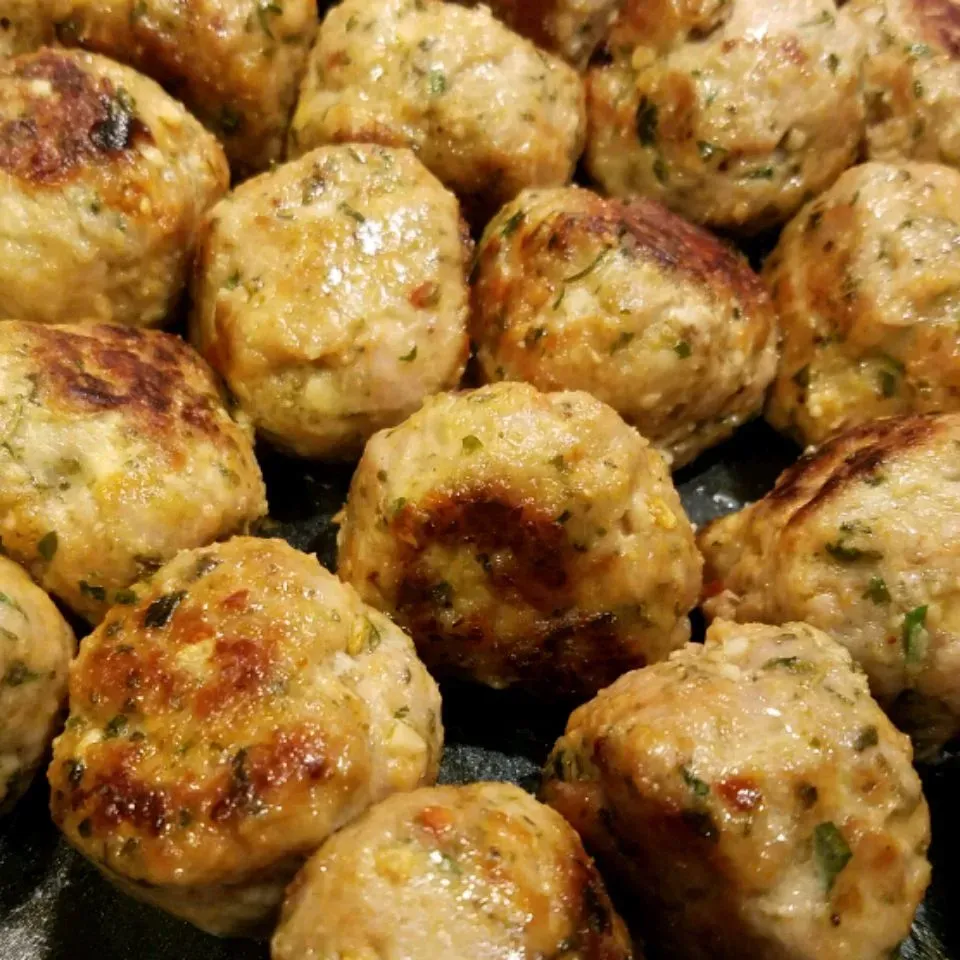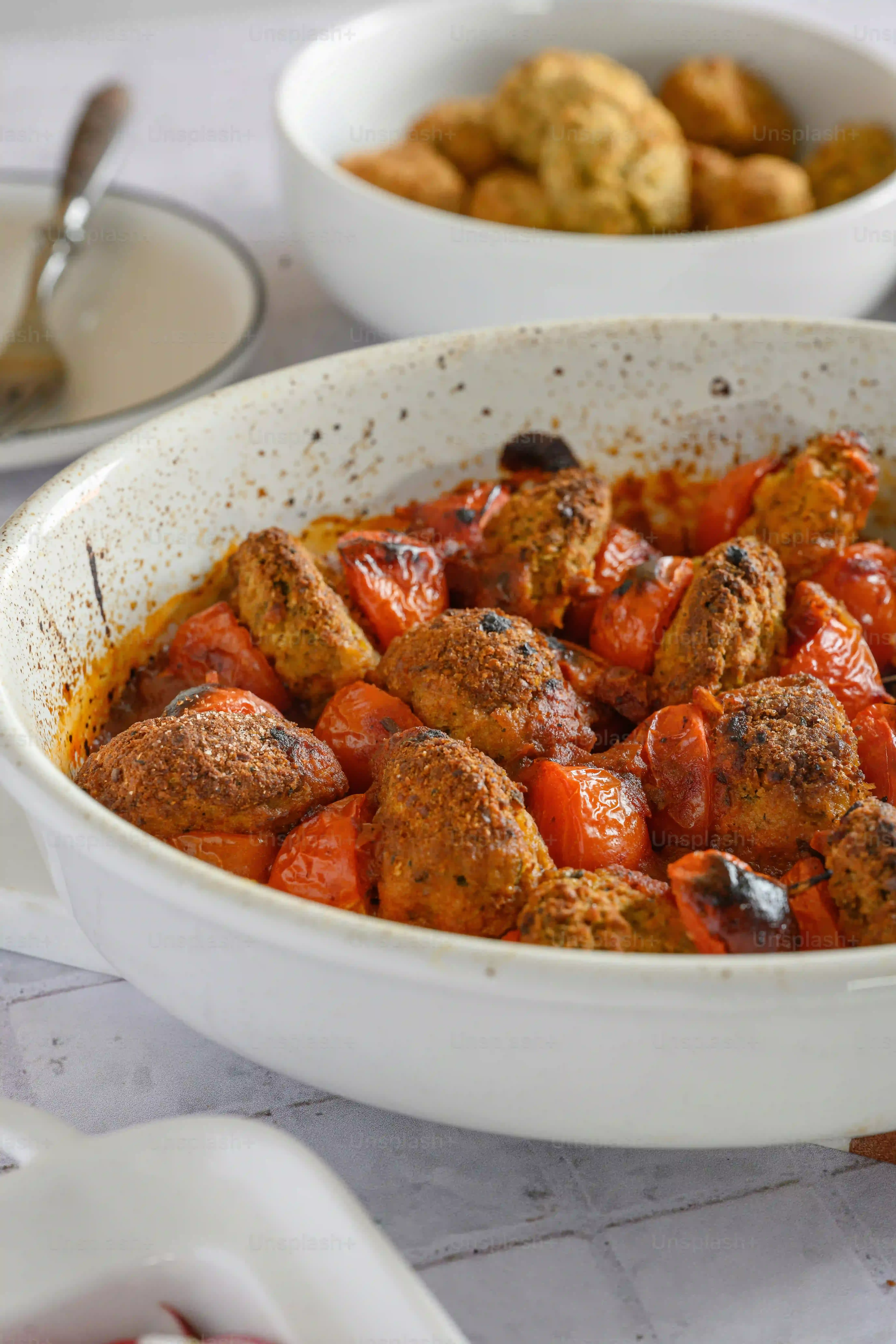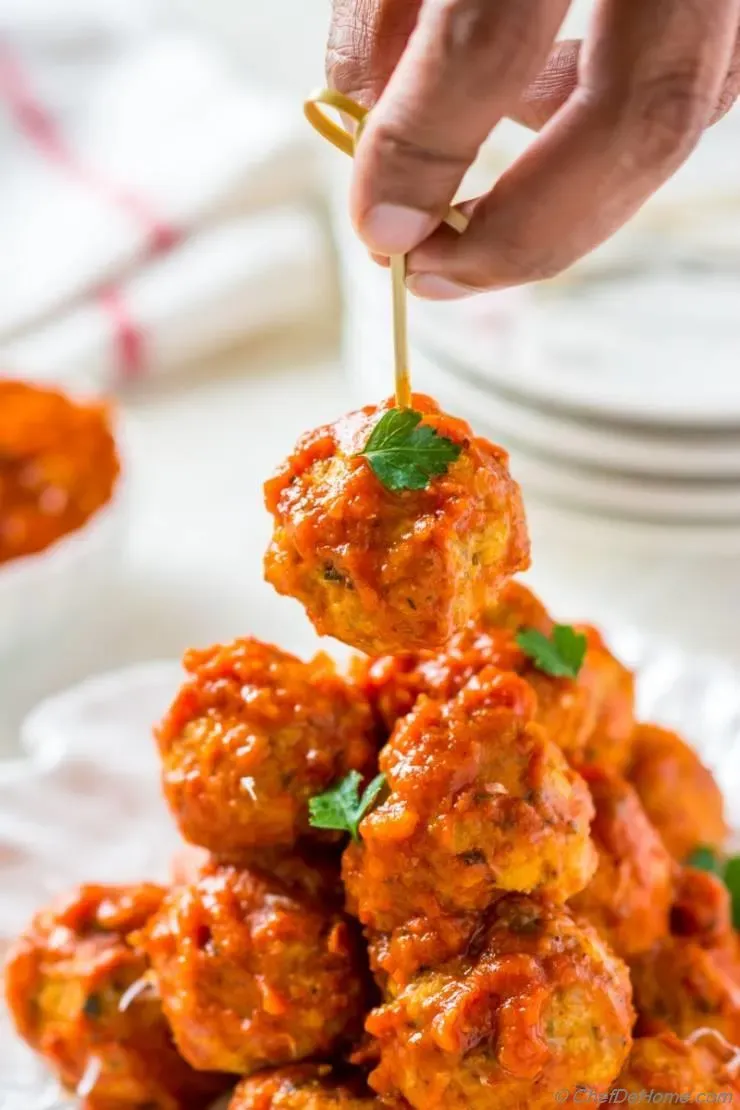Table of Contents
Let's be honest. Turkey meatballs often get a bad rap. Dry, flavorless, basically little brown hockey pucks masquerading as dinner. You've probably tried making them before, hoping for a healthier alternative to beef, only to be met with disappointment. It's a common culinary tragedy.
Why This Recipe for Italian Turkey Meatballs?

Why This Recipe for Italian Turkey Meatballs?
Breaking the Dry Meatball Curse
Look, we've all been there. You try to make turkey meatballs, thinking you're doing your body a favor, and end up with something that tastes like seasoned sawdust. It's frustrating. You follow a recipe, you roll them up, you bake or fry them, and the result is uniformly disappointing. They lack that juicy bounce you get from beef or pork, and often, the flavor just doesn't punch through. This isn't your fault; many recipes just don't account for the lean nature of turkey. They treat it like ground beef, and that's a recipe for failure, literally.
What Makes This One Different?
So, why bother with *this* recipe for Italian turkey meatballs? Simple. It acknowledges turkey's weaknesses and actively works around them. We aren't just throwing ingredients together and hoping for the best. We're adding specific elements and using techniques designed to inject moisture and flavor where turkey usually falls short. Think about the usual suspects: breadcrumbs, egg, maybe some garlic and onion. Fine, but not enough to combat dryness. This recipe layers flavor and moisture from multiple angles, ensuring every bite is tender and satisfying, not a chore to chew.
Here's a quick look at what sets it apart:
- Using soaked bread (Panade) instead of dry breadcrumbs for moisture.
- Incorporating grated cheese directly into the mix for fat and flavor.
- Adding a touch of milk or broth for extra liquid.
- Mixing technique that prevents toughness.
Flavor That Stands Up
Beyond just avoiding dryness, this recipe for Italian turkey meatballs delivers on taste. We're talking classic Italian flavors – garlic, onion, herbs, and that essential parmesan tang – but balanced so they complement, not overpower, the turkey. You get a meatball that's light enough to feel healthier than beef but rich enough to satisfy that craving for comfort food. It's a genuinely good meatball, not just a "good for turkey" meatball. You won't feel like you're compromising on flavor for the sake of leanness; you're just getting a better meatball, period.
Getting Your Ingredients Ready for Perfect Turkey Meatballs

Getting Your Ingredients Ready for Perfect Turkey Meatballs
Picking the Right Ground Turkey
Alright, let's talk turkey, literally. This is where things can go sideways fast if you grab the wrong stuff. You might think "leaner is better," but for juicy meatballs, that's a rookie mistake. Super lean 99% fat-free ground turkey is the main culprit behind those dry, sad meatballs. You need *some* fat in there to keep things moist and flavorful as they cook. Aim for ground turkey that's around 93% lean. It has enough fat to contribute moisture without making the meatballs greasy. If you can only find 99%, you'll need to work harder in the next steps to compensate, maybe by adding a bit of olive oil or even a tiny bit of ground pork to the mix. Don't just grab the cheapest pack; check that lean-to-fat ratio.
The Magic of the Panade
Forget dry breadcrumbs. Seriously. They just soak up the meat's precious moisture. The secret weapon in this recipe for italian turkey meatballs is the panade. This is just a fancy term for soaking bread in liquid – usually milk, sometimes broth or even water. This soaked bread does two critical things: it adds moisture directly into the mix, and it creates a tender structure within the meatball as it cooks. Think of it as building in juiciness from the ground up. Use stale bread if you have it; it absorbs liquid better, but fresh will work too. Just tear it into small pieces and let it soak completely before squeezing out any excess liquid. It should be moist and crumbly, not soggy.
Here's what you'll need for a solid panade base:
- About 1/2 cup packed fresh bread (crusts removed if they're very hard)
- About 1/4 cup milk (whole milk adds a little extra richness, but 2% is fine)
- A small bowl to mix them in
Combine the bread and milk, let it sit for 5-10 minutes until soft, then squeeze gently to remove excess liquid. Mash it up a bit with a fork before adding it to your meat mix.
Flavor Boosters That Matter
Once you've got your turkey and your panade sorted, it's time for the flavor party. This recipe for italian turkey meatballs relies on classic ingredients, but the *quality* and *preparation* make a difference. Grate your own Parmesan cheese; the pre-shredded stuff has anti-caking agents that affect texture and flavor. Finely mince your garlic and onion; no big chunks here, we want the flavor distributed evenly. Fresh herbs like parsley and oregano are always better than dried if you can get them. And don't be shy with the salt and pepper. Turkey needs proper seasoning to sing. A pinch of red pepper flakes can add a nice subtle warmth without making it spicy, if that's your jam.
Mixing, Rolling, and Cooking Your Italian Turkey Meatballs

Mixing, Rolling, and Cooking Your Italian Turkey Meatballs
The Gentle Art of Mixing
you've got your beautiful panade, your seasoned ground turkey, and all those flavor boosters sitting in a bowl. Now comes a crucial step in this recipe for italian turkey meatballs: mixing. This isn't like mixing dough; you are not trying to develop gluten (turkey doesn't have it anyway) or build structure through vigorous kneading. You're just incorporating the ingredients until they're *just* combined. Overmixing is the enemy of tender meatballs. It compresses the meat, squeezing out moisture and making them dense and tough. Use your hands, they're the best tools here. Gently fold and combine everything. Imagine you're fluffing pillows, not wrestling an alligator. Work quickly and stop as soon as you don't see streaks of plain meat or clumps of panade.
Shaping and Searing for Success
Once your mixture is ready – and remember, it will be softer than beef – it's time to roll. Aim for meatballs roughly the same size, maybe 1.5 to 2 inches in diameter. Uniform size means they cook evenly. Use a small scoop if you have one, or just eyeball it. Don't pack them too tightly when rolling. A light touch is key. Now, cooking. While you *can* bake them, searing first in a hot pan with a little olive oil gives them a fantastic crust and locks in flavor. Get a nice golden-brown exterior on all sides. You don't need to cook them through at this stage; they'll finish cooking either in the oven or, ideally, simmering gently in your favorite marinara sauce. That simmer time in sauce is another secret weapon for keeping these italian turkey meatballs moist and infusing them with even more flavor.
Here are a few pointers for this stage:
- Keep a small bowl of water nearby to wet your hands slightly if the mixture is sticky.
- Don't overcrowd the pan when searing; cook in batches if necessary to ensure good browning.
- If baking without searing first, place them on a wire rack set inside a baking sheet to allow air circulation.
- Always finish cooking meatballs by simmering them in sauce for at least 15-20 minutes. This is non-negotiable for maximum juiciness.
Serving Suggestions and Storing Leftovers

Serving Suggestions and Storing Leftovers
Putting Those Meatballs to Work
you've done it. You've made juicy, flavorful italian turkey meatballs using this recipe. Now what? The obvious answer is tossing them with your favorite pasta and marinara sauce. It's a classic for a reason. But don't stop there. These aren't just pasta partners. They're fantastic on a sub roll, piled high with provolone and baked until gooey. Or slice them up and put them on a pizza. Seriously, try it. They also work beautifully simmered in a lighter broth-based soup or even served as appetizers with toothpicks, maybe alongside a little dish of extra sauce for dipping. The point is, they're versatile because they actually taste good on their own, not just as a vehicle for sauce.
Keeping Your Leftovers Fresh
Let's assume, for a moment, that you actually have leftovers. It's a big assumption, I know, but it happens. Properly storing your leftover italian turkey meatballs is key to enjoying them later without them turning sad and rubbery. Once they've cooled completely – and I mean *completely*, don't trap steam in there – transfer them to an airtight container. If they're already in sauce, store them together. If they're plain, they'll keep for about 3-4 days in the fridge. For longer storage, the freezer is your friend. You can freeze them in sauce or plain. Plain frozen meatballs are great for tossing into a quick soup or sauce later. Just make sure they're in a freezer-safe bag or container to prevent freezer burn. They'll keep well for up to 3 months.
- Always cool meatballs completely before storing.
- Use airtight containers or freezer bags.
- Refrigerate for up to 4 days.
- Freeze for up to 3 months.
Reviving and Reimagining Leftovers
So you've got a container of cold, cooked italian turkey meatballs. Don't just microwave them into oblivion. If they're in sauce, gently reheat on the stove over low heat, stirring occasionally until warmed through. If they're plain, the best way to reheat is usually to add them to simmering sauce or even a little broth and let them heat through gently. Microwaving plain meatballs is a fast track to dry town. Think beyond just serving them the same way twice. Cold sliced meatballs are actually decent on a salad. Or chop them up and add them to scrambled eggs or a frittata. Leftover night doesn't have to be boring; it's an opportunity for a culinary remix, especially when you start with meatballs that were actually good to begin with.
So, Did We Fix Turkey Meatballs?
Alright, so we took on the notoriously dry turkey meatball. We didn't drown it in unnecessary ingredients or promise some kind of culinary miracle cure. We just focused on the fundamentals: keeping things simple, using smart techniques during mixing, and cooking them right. The result? Meatballs that are actually enjoyable. No more pretending you like them because they're "healthy." These have flavor, they have moisture, and they might just change your mind about ground turkey. Give it a shot, and see if your dinner table agrees.